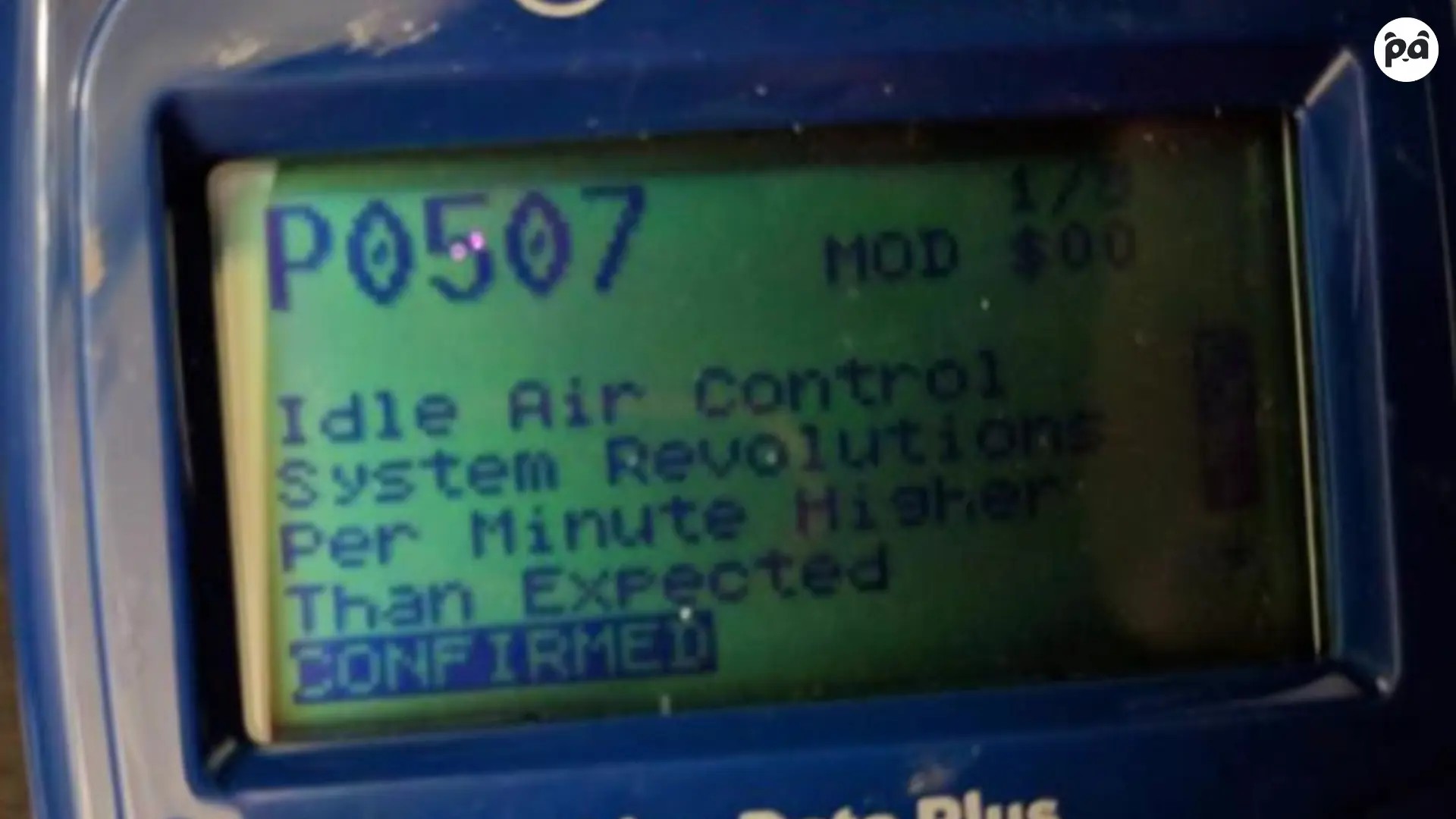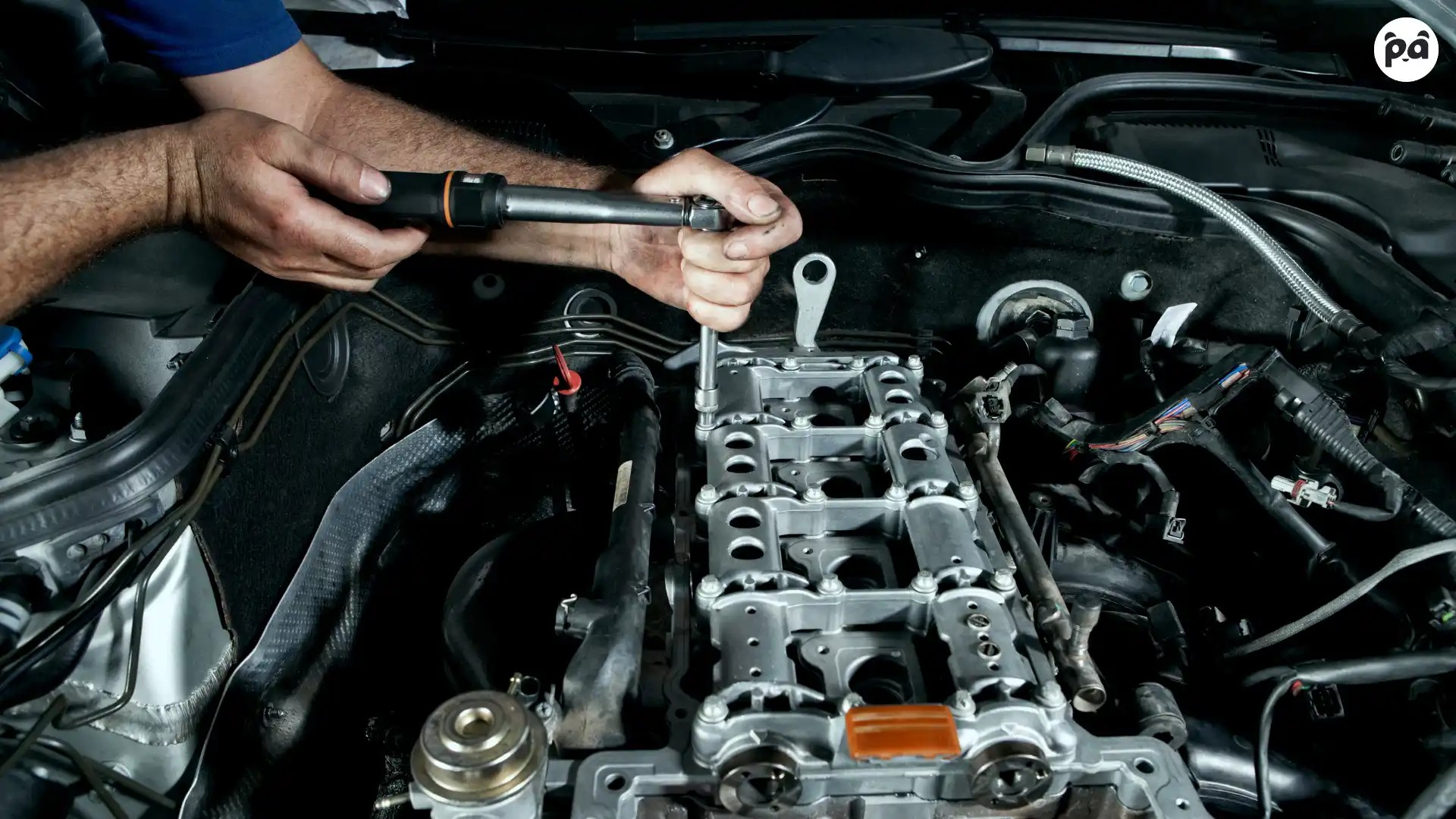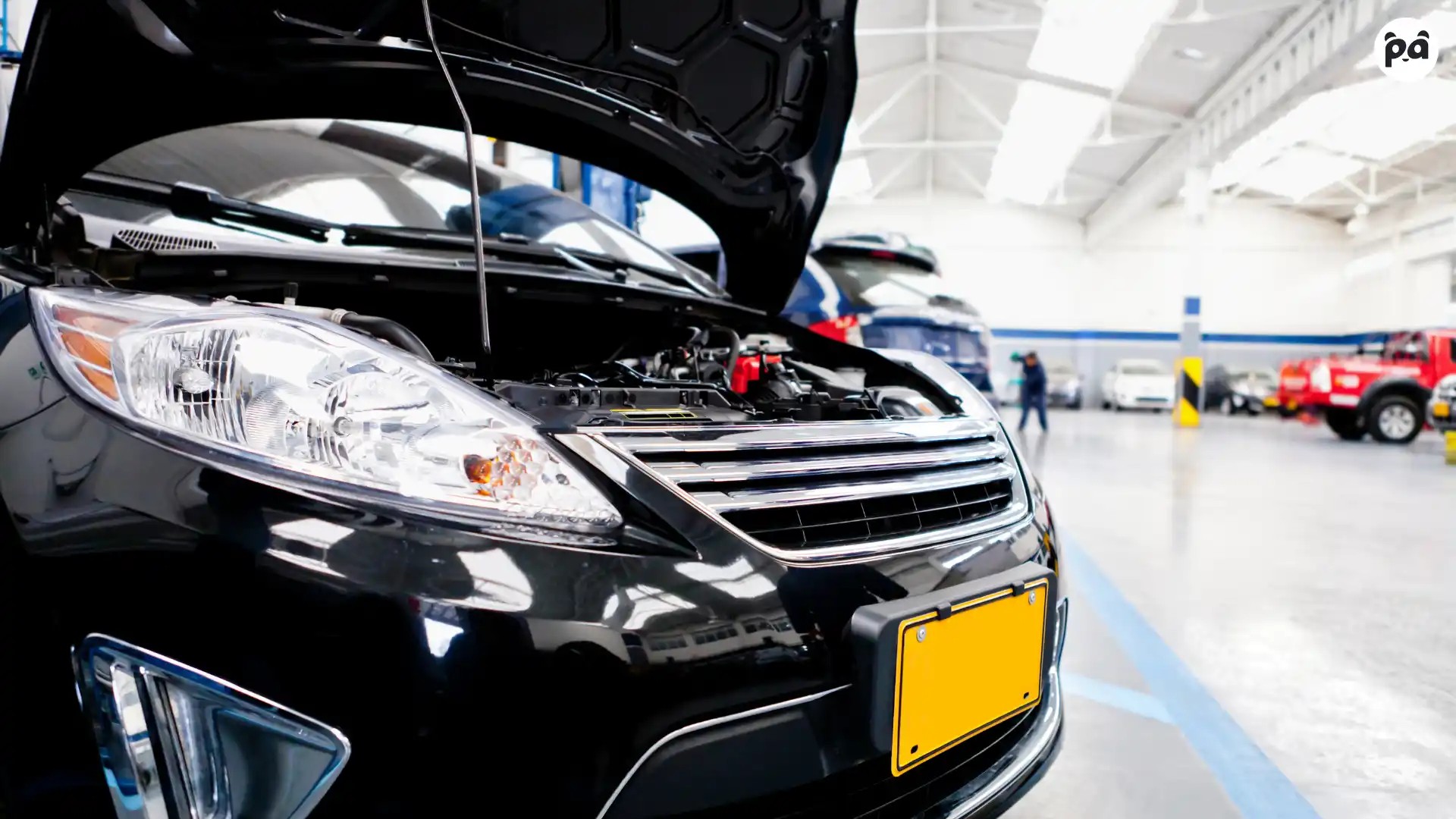The check engine light illuminates on your dashboard, and suddenly, a wave of concern washes over you. Among the myriad of potential OBDII codes that could be the culprit, the P0507 code might seem less intimidating than others. However, dismissing this code can lead to significant vehicle performance and efficiency problems. As an auto repair expert at autelfrance.com, I’m here to provide you with a comprehensive guide to understanding, diagnosing, and resolving the OBDII code P0507, ensuring your vehicle runs smoothly and efficiently.
Decoding the P0507 Code: Idle Air Control System RPM Higher Than Expected
The P0507 code is formally defined as “Idle Air Control System RPM Higher Than Expected.” This diagnostic trouble code (DTC) indicates that your car’s engine is idling at a higher RPM (revolutions per minute) than the manufacturer-specified target. The engine control unit (ECU) diligently monitors and regulates the engine’s idle speed to ensure smooth operation when your foot is off the accelerator pedal. When the ECU detects that the idle RPM is exceeding the programmed parameters, it triggers the P0507 code and illuminates the check engine light, signaling a problem within the idle control system.
 Close-up of a technician using an OBD-II scanner to diagnose a car, highlighting the importance of professional tools in identifying issues like the P0507 code.
Close-up of a technician using an OBD-II scanner to diagnose a car, highlighting the importance of professional tools in identifying issues like the P0507 code.
Recognizing the Symptoms of a P0507 Code
While the check engine light is the most direct indication of a P0507 code, several other symptoms can alert you to a potential issue with your vehicle’s idle control system. Recognizing these signs early can help you address the problem promptly and prevent further complications:
- Engine Stalling or Dying at Stoplights: A higher-than-normal idle RPM can sometimes be erratic. When you come to a stop, the engine might struggle to maintain a stable idle and could stall unexpectedly.
- Rough Idling: Instead of a smooth, consistent idle, you might experience vibrations, shaking, or an unsteady engine sound when the vehicle is stationary and in gear.
- Increased Fuel Consumption: An elevated idle speed means the engine is working harder and consuming more fuel even when you’re not moving. This can lead to noticeable decreases in fuel economy.
- Check Engine Light is On: This is the most consistent symptom. The malfunction indicator lamp (MIL), commonly known as the check engine light, will illuminate on your dashboard when the P0507 code is triggered.
It’s crucial to remember that experiencing one or more of these symptoms, especially in conjunction with a check engine light, warrants a diagnostic check for the P0507 code.
Common Causes Behind the P0507 Code
Several factors can disrupt the delicate balance of the idle air control system and lead to a P0507 code. Understanding these potential causes is the first step towards effective diagnosis and repair:
- Vacuum Leaks: Unmetered air entering the engine intake manifold after the throttle body can significantly increase idle RPM. Vacuum leaks can occur due to cracked or disconnected hoses, faulty intake manifold gaskets, or leaks in other vacuum-operated components.
- Throttle Body Issues: A dirty or carbon-clogged throttle body can prevent the throttle plate from closing completely, allowing excessive air into the engine and raising the idle speed. In some cases, the throttle body position sensor itself might be malfunctioning, providing incorrect readings to the ECU.
- Dirty Air Passages and Idle Air Control (IAC) Valve Problems: The IAC valve regulates the amount of air bypassing the throttle plate at idle. Carbon deposits can accumulate in the IAC valve or its air passages, restricting airflow and potentially causing the valve to stick open, leading to a high idle. In some vehicles, the IAC valve itself may be faulty and require replacement.
- Mechanical Failures within the IAC System: Although less common, mechanical failures within the IAC system, such as a burnt-out IAC motor or electrical issues in the IAC circuit, can also trigger a P0507 code.
Step-by-Step Diagnosis of the P0507 Code
Diagnosing the P0507 code requires a systematic approach to pinpoint the root cause. Here’s a detailed step-by-step diagnostic process you can follow:
- Retrieve OBD-II Error Codes: Begin by using an OBD-II scanner to read all stored diagnostic trouble codes from your vehicle’s computer. Note down all codes, not just the P0507, as other related codes can provide valuable clues.
- Inspect the Throttle Body: Visually inspect the throttle body for carbon buildup and obstructions. Clean the throttle body using a throttle body cleaner and a soft cloth, ensuring you carefully clean around the throttle plate.
- Check the Idle Air Control (IAC) Valve (if applicable): Depending on your vehicle, it may have a separate IAC valve. Inspect the IAC valve and its passages for carbon deposits. If accessible, carefully clean the IAC valve. You can also test the IAC valve’s functionality using a multimeter or by manually checking its movement (refer to your vehicle’s repair manual for specific procedures).
- Diagnose for Vacuum Leaks: Thoroughly inspect all vacuum hoses for cracks, leaks, or disconnections. Listen for hissing sounds, which can indicate a vacuum leak. A smoke machine can be a highly effective tool for pinpointing vacuum leaks by introducing smoke into the intake system and observing where it escapes.
- Perform an Idle Relearn Procedure: After cleaning the throttle body or IAC valve, or after replacing any components, perform an idle relearn procedure. This allows the ECU to recalibrate and learn the new idle parameters. The relearn procedure varies by vehicle manufacturer and model; consult your vehicle’s repair manual for the correct steps.
- Check for Wire and Connector Damage: Inspect the wiring and connectors associated with the IAC valve and throttle body position sensor for any signs of damage, corrosion, or loose connections. Repair or replace any damaged wiring or connectors.
- Test the Battery and Charging System: Although less direct, a weak or unstable battery voltage can sometimes cause erratic readings and trigger false codes. Test your battery voltage and charging system to ensure they are functioning correctly.
 Automotive technician performing a vacuum leak test on an engine using a smoke machine, essential for diagnosing P0507 code causes.
Automotive technician performing a vacuum leak test on an engine using a smoke machine, essential for diagnosing P0507 code causes.
Effective Solutions for Resolving the P0507 Code
The appropriate solution for a P0507 code depends on the underlying cause identified during the diagnostic process. Here are several effective solutions you might consider:
- DIY Idle Relearn Procedure: If the high idle is minor and occurs after cleaning or minor adjustments, an idle relearn procedure might be sufficient to resolve the P0507 code.
- Throttle Body Cleaning: Thoroughly cleaning a dirty throttle body is often the first and most effective step in addressing P0507 codes caused by carbon buildup.
- IAC Valve Replacement: If the IAC valve is faulty or cannot be effectively cleaned, replacing it with a new unit is necessary.
- Vacuum Leak Repair: Locate and repair any vacuum leaks by replacing cracked hoses, tightening connections, or replacing faulty gaskets.
- Professional OBD-II Scanner Reset: After addressing the underlying cause and performing repairs, use an OBD-II scanner to clear the P0507 code and reset the check engine light. In some cases, a professional-grade scanner might be required for a complete system reset.
The Unexpected Benefit of Car Detailing on Engine Performance
While seemingly unrelated, regular car detailing, particularly engine bay detailing, can play a role in preventing issues that contribute to the P0507 code. Keeping your engine compartment clean removes dirt, debris, and grime that can accumulate around critical components like the throttle body and IAC valve. This buildup can contribute to carbon deposits and airflow restrictions, potentially leading to idle control problems. Regular engine bay detailing ensures these parts function optimally, preventing potential P0507 issues and contributing to overall engine health.
Understanding the Costs Associated with P0507 Repairs
The cost to repair a P0507 code can vary depending on the cause and the necessary repairs. Here’s a breakdown of potential costs:
- Parts Pricing: The cost of parts can range from relatively inexpensive, such as a can of throttle body cleaner (around $10-$20) or a vacuum hose ($5-$20), to more significant expenses like an IAC valve replacement (ranging from $50 to $200 or more depending on vehicle and brand).
- Labor Estimates: Labor costs will depend on the complexity of the repair and your mechanic’s hourly rate. Simple fixes like throttle body cleaning might involve minimal labor charges, while diagnosing and repairing vacuum leaks or replacing an IAC valve can take more time and increase labor costs. Labor rates typically range from $75 to $150 per hour or more.
- Total Repair Cost: The total cost to address a P0507 code can range from a DIY fix costing under $50 for cleaning supplies to professional repairs potentially exceeding $500 or more for complex issues requiring parts replacement and significant labor.
{{cta-banner}}
Preventative Measures to Avoid Future P0507 Issues
Prevention is always better than cure. Adopting proactive vehicle maintenance habits can significantly reduce the likelihood of encountering a P0507 code and other engine-related problems:
- Regular Vehicle Maintenance: Adhere to your vehicle manufacturer’s recommended maintenance schedule. Regular servicing, including air filter replacements, spark plug changes, and inspections, can prevent many issues that contribute to P0507 codes.
- Use Quality Fuel: Using high-quality fuel from reputable stations can minimize carbon buildup in your engine and fuel system, helping to keep components like the throttle body and IAC valve cleaner for longer.
- Gentle Driving Habits: Avoid aggressive acceleration and harsh braking, as these driving habits can contribute to engine wear and tear over time. Smooth, moderate driving is generally better for your vehicle’s longevity.
- Regular Air Filter Changes: A clean air filter ensures that only clean, filtered air enters your engine. Replacing your air filter at recommended intervals prevents debris from entering the intake system and potentially causing issues with the throttle body or IAC valve.
When Professional Diagnostics Become Essential
While some P0507 code issues can be resolved with DIY efforts, there are situations where seeking professional diagnostic expertise is crucial. If you are uncomfortable performing any of the diagnostic steps, or if you’ve attempted DIY fixes and the P0507 code persists, it’s time to consult a qualified mechanic. Professional technicians have specialized tools, diagnostic equipment, and expertise to accurately pinpoint complex issues and perform necessary repairs effectively.
 A mechanic using professional diagnostic tools in a car repair shop, emphasizing the importance of expert assistance for complex OBD-II code issues like P0507.
A mechanic using professional diagnostic tools in a car repair shop, emphasizing the importance of expert assistance for complex OBD-II code issues like P0507.
Avoiding Common Mistakes During P0507 Diagnosis and Repair
Repairing a P0507 code effectively requires careful attention to detail and avoiding common pitfalls. Here are some mistakes to steer clear of:
- Assuming a Quick Fix: Don’t assume that a P0507 code is always a simple, quick fix. Thorough diagnosis is essential to identify the actual root cause, which might be more complex than initially anticipated.
- Overlooking Vacuum Leaks: Vacuum leaks are a frequent cause of P0507 codes and can be tricky to locate. Don’t neglect to thoroughly check for vacuum leaks using appropriate diagnostic methods.
- Skipping the Idle Relearn Procedure: The idle relearn procedure is crucial after cleaning or replacing components in the idle control system. Skipping this step can result in the P0507 code returning or persistent idle issues.
- Failing to Recheck for Codes: After performing repairs, always re-scan the vehicle for OBD-II codes to ensure the P0507 code has been successfully resolved and no other related issues have arisen.
Real-World Case Studies: P0507 Code Scenarios
The P0507 code can manifest in various ways, depending on the specific underlying cause. Here are a few case studies illustrating different scenarios and solutions:
- Case 1: The Gunked-Up Throttle Body: A vehicle exhibited a P0507 code along with rough idling. Diagnosis revealed a heavily carbon-clogged throttle body. Cleaning the throttle body resolved the issue, and the P0507 code was cleared. The total cost was primarily labor for the diagnostic and cleaning process, totaling around $150.
- Case 2: The Elusive Vacuum Leak: A car presented with a P0507 code and an unusually high idle. Initial visual inspection didn’t reveal any obvious vacuum leaks. However, smoke testing identified a small crack in the intake manifold hose. Replacing the hose and clearing the code resolved the problem. The repair cost was approximately $250, including parts and labor for diagnosis and leak repair.
- Case 3: Damaged IAC Wiring: A vehicle displayed a P0507 code and intermittent high idle. Diagnostic checks of the IAC valve itself showed no issues. However, a closer inspection of the wiring harness revealed rodent damage to the IAC valve wiring. Repairing the damaged wiring harness resolved the P0507 code. The cost in this case was around $200, mainly for diagnostic labor to pinpoint the wiring issue.
Conclusion: Successfully Navigating P0507 Code Challenges
Addressing a P0507 code effectively involves a combination of understanding the symptoms, systematically diagnosing the potential causes, and implementing appropriate solutions. Whether you choose a DIY approach or seek professional assistance, remember that thoroughness and attention to detail are key to resolving this issue and ensuring your vehicle’s optimal performance and longevity. By staying informed and proactive with vehicle maintenance, you can minimize the chances of encountering the OBDII code P0507 and keep your car running smoothly for miles to come.
FAQs: Expert Answers About the P0507 Code
Q: Can a P0507 code cause long-term damage if ignored?
A: Yes, ignoring a P0507 code can potentially lead to long-term engine problems. A persistently high idle can increase engine wear, reduce fuel efficiency, and in some cases, lead to overheating or other related issues if the underlying cause is not addressed.
Q: Will a P0507 code cause my car to fail an emissions test?
A: Yes, a P0507 code is likely to cause your car to fail an emissions test. Because it indicates a malfunction in the idle air control system, which directly affects engine emissions, it will typically result in a failed emissions inspection.
Q: Is it safe to drive my car with a P0507 code?
A: While you might be able to drive your car with a P0507 code, it is not advisable for extended periods. The high idle condition can lead to reduced fuel economy, potential engine stalling, and increased wear and tear. It’s best to diagnose and repair the issue as soon as possible to avoid further complications and ensure safe and efficient vehicle operation.
